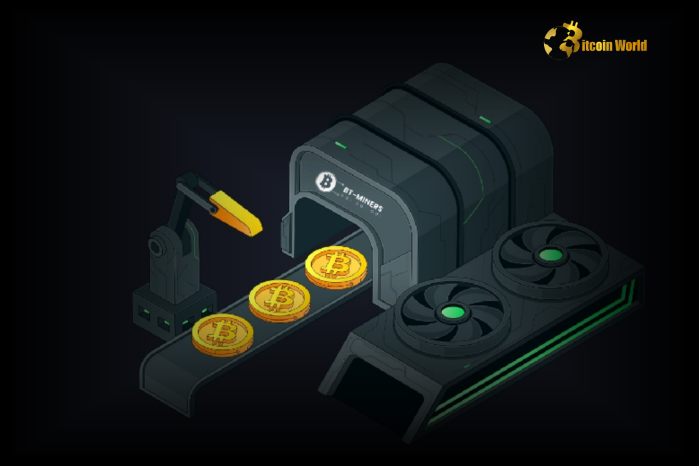
How Bitcoin Mining Works: Everything You Need to Know
Bitcoin mining is a cornerstone of the cryptocurrency ecosystem. It ensures the network’s security, processes transactions, and introduces new Bitcoins into circulation. If you’ve ever wondered, “how does Bitcoin mining work?” or “how long does it take to mine 1 Bitcoin?”, this guide will explain the fundamentals, processes, and tools required to get started.
What is Bitcoin Mining?
Bitcoin mining is the process of validating and adding transactions to the Bitcoin blockchain while generating new Bitcoins. Miners use specialized hardware to solve complex mathematical problems. Successfully solving these problems earns the miner a reward, known as the block reward, currently set at 6.25 BTC per block (as of 2024).
Key Functions of Bitcoin Mining
- Transaction Validation: Miners verify transactions to prevent fraud, such as double-spending.
- Network Security: Mining ensures the decentralized Bitcoin network remains secure.
- Bitcoin Creation: Mining introduces new Bitcoin into circulation, capped at 21 million coins.
How Does Bitcoin Mining Work?
Bitcoin mining relies on the Proof-of-Work (PoW) mechanism, requiring miners to compete in solving cryptographic puzzles. Here’s how it works:
- Transaction Collection
Miners gather pending transactions from the Bitcoin network into a block. - Puzzle Solving
Miners compete to solve a mathematical problem, or “hash.” The goal is to find a number (called a nonce) that produces a hash meeting specific criteria. - Block Validation
Once a miner solves the puzzle, the block is broadcast to the network for validation by other nodes. - Block Addition
After validation, the block is added to the blockchain, and the miner receives the block reward and transaction fees.
How Long Does it Take to Mine 1 Bitcoin?
The time required to mine 1 Bitcoin depends on several factors, including hardware efficiency, electricity costs, and mining difficulty.
Current Metrics
- Average Block Time: Bitcoin blocks are mined every 10 minutes.
- Mining 1 Bitcoin: Since each block contains a reward of 6.25 BTC, mining 1 BTC takes approximately 1.6 minutes (assuming proportional effort in a mining pool).
- Solo Mining: For solo miners, mining 1 Bitcoin can take months or years, depending on computational power.
Can You Mine Bitcoin on a Laptop?
While technically possible, mining Bitcoin on a laptop is highly inefficient. Modern mining requires ASIC (Application-Specific Integrated Circuit) machines, which are far more powerful and energy-efficient than laptops or GPUs.
What is a Bitcoin Miner?
A Bitcoin miner can refer to:
- Hardware: Specialized devices, such as ASIC miners, designed to mine Bitcoin.
- Individual or Entity: People or organizations operating mining hardware to participate in the Bitcoin network.
Popular Mining Hardware
- Antminer Series: Known for high efficiency and performance.
- WhatsMiner Series: A popular choice for professional miners.
- GPU Rigs: More versatile but less efficient compared to ASICs.
How to Start Bitcoin Mining
If you’re interested in mining Bitcoin, follow these steps to get started:
1. Acquire Mining Hardware
Invest in ASIC miners for optimal performance. Research models like Antminer S19 or WhatsMiner M50 for high hash rates and energy efficiency.
2. Choose Mining Software
Install mining software to connect your hardware to the Bitcoin network. Popular options include:
- CGMiner
- BFGMiner
- EasyMiner
3. Join a Mining Pool
Mining pools combine resources from multiple miners to increase the chances of earning rewards. Popular pools include:
- Slush Pool
- F2Pool
- Antpool
4. Set Up Wallet
Secure your earnings by setting up a Bitcoin wallet. Options include hardware wallets (e.g., Ledger, Trezor) or software wallets like Exodus or Electrum.
5. Monitor and Optimize
Use mining management software to monitor performance, adjust settings, and ensure profitability.
How Many Sats in a Bitcoin?
Bitcoin is divisible into smaller units called Satoshis (Sats), named after its pseudonymous creator, Satoshi Nakamoto.
Conversion
- 1 Bitcoin (BTC) = 100,000,000 Sats
This divisibility allows Bitcoin to support microtransactions and increases its usability as a currency.
Challenges of Bitcoin Mining
While Bitcoin mining can be rewarding, it comes with significant challenges:
1. High Energy Costs
Mining requires substantial electricity, making it expensive in regions with high power costs.
2. Increasing Difficulty
Bitcoin’s mining difficulty adjusts approximately every two weeks, ensuring blocks are mined every 10 minutes. As difficulty rises, miners need more powerful hardware.
3. Environmental Concerns
Critics often cite Bitcoin mining’s environmental impact due to its high energy consumption. Efforts to adopt renewable energy sources are gaining momentum within the industry.
FAQs About Bitcoin Mining
1. How does Bitcoin mining work?
Bitcoin mining involves solving complex cryptographic puzzles to validate transactions and add blocks to the blockchain. Successful miners earn Bitcoin as a reward.
2. How long does it take to mine 1 Bitcoin?
Mining 1 Bitcoin takes approximately 1.6 minutes in a pool setup but may take much longer for solo miners.
3. Can I mine Bitcoin on a laptop?
Mining on a laptop is inefficient and unprofitable due to the computational power required for modern Bitcoin mining.
4. How much does mining hardware cost?
ASIC miners range from $2,000 to $10,000, depending on their hash rate and efficiency.
5. How many Satoshis are in a Bitcoin?
There are 100,000,000 Sats in 1 Bitcoin, making it highly divisible.
Conclusion
Bitcoin mining is an essential process that keeps the network secure, validates transactions, and introduces new coins into circulation. While it can be profitable, it requires significant investment in hardware, electricity, and expertise.
Whether you’re a beginner or an experienced miner, understanding the mechanics of Bitcoin mining is crucial to maximizing efficiency and profitability. Start your mining journey today with the right tools and knowledge.
For more insights, explore our guide on Best Bitcoin Mining Practices for Beginners.















